Magnesium Rich Foods: 42 Best Sources To Boost Your Health
You would want to include the richest sources of this crucial mineral in your diet.
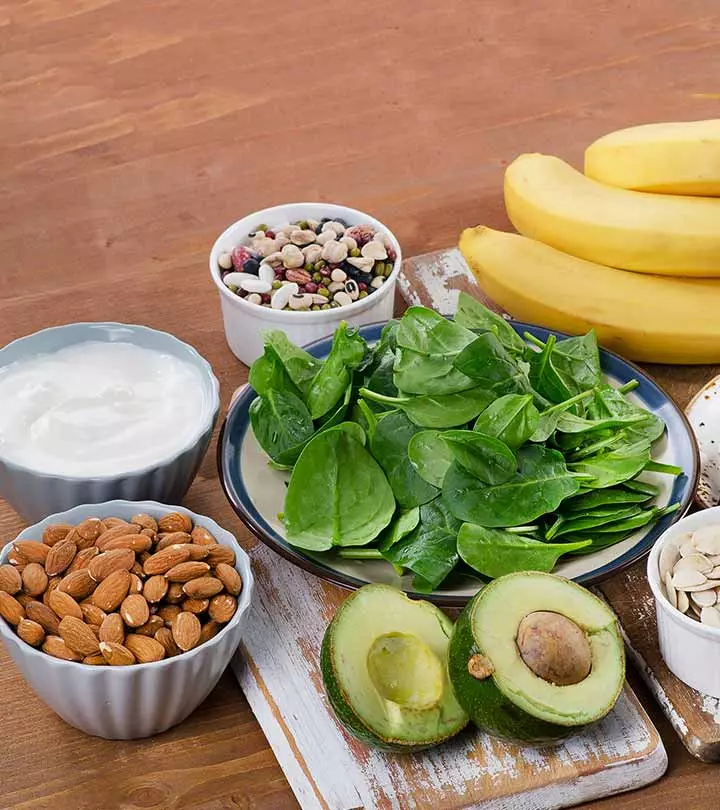
Image: Shutterstock
Magnesium deficiency has been linked to gastrointestinal problems and an increased risk of cardiovascular illnesses (1). That is why including magnesium-rich foods in your diet is crucial. This article discusses why magnesium is crucial for your health, the best food sources of magnesium, and ways to incorporate them into your daily diet. Keep reading.

In This Article
Why Is Magnesium Essential?
Although magnesium deficiency is rare in otherwise healthy people due to low dietary intake, people with certain health conditions, such as gastrointestinal diseases, type 2 diabetes, and alcohol dependence, may be at risk for magnesium deficiency. However, if someone has long-term low magnesium intakes, they could put themselves at risk for magnesium deficiency. Studies have shown how not consuming enough magnesium can lead to metabolic disorders like hypertension and type 2 diabetes (2).
In fact, magnesium supplementation may help reverse prediabetesi Condition prior to type-2 diabetes with high sugar levels, which, without lifestyle changes and medication, may progress to diabetes. (3). It also prevents a whole lot of other undesirables including migraine, premenstrual syndrome, and fibromyalgia (excessive musculoskeletal pain) (4). Plus, it is a cofactor in over 300 enzymatic reactions in the body, such as muscle function and protein synthesis (1). Not to forget the benefits of magnesium for the skin. This mineral may help with cellular repair and protect the skin from damage.
It feels wonderful to know how important magnesium is, doesn’t it? But now, for the big question – are you even getting enough magnesium?
Key Takeaways
- Magnesium is crucial for bodily functions.
- Eat fruits and vegetables to maintain healthy levels of magnesium.
- Magnesium is abundantly found in grains and legumes.
- Stress, gluten, alcohol, and sugar lower the body’s magnesium levels.
Magnesium – Rich Foods
Wondering which foods have magnesium? Here are the top 42 magnesium-rich foods that you will surely want to add into your diet.
Seeds And Nuts High In Magnesium
1. Brazil Nuts
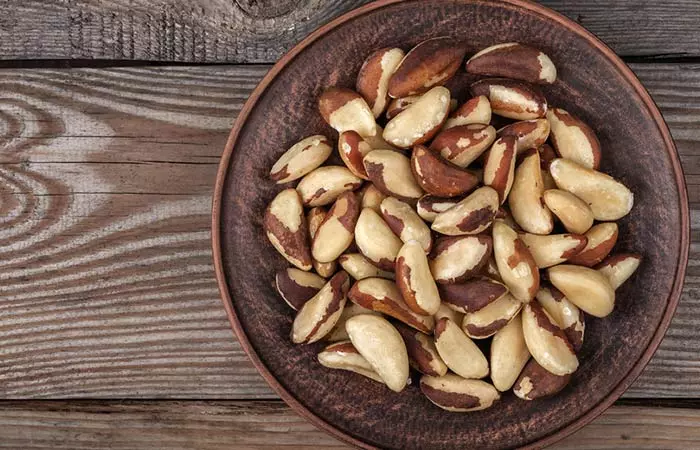
Serving size – 1 ounce (28.4 grams)
Magnesium – 107 mg
DV – 26 %
They might be high in calories, but within those calories are numerous vitamins, minerals, and antioxidants. The nuts are especially rich in selenium as well, which research shows can render cardioprotective benefits (5).
Including Brazil nuts in your diet
You can eat the nuts raw or roasted. However, ensure you don’t eat too many at a time as it might lead to selenium toxicity.
 Trivia
Trivia2. Almonds
Serving size – 1 ounce (28.4 grams; 23 whole kernels) Magnesium – 76 mg DV –19 %
We all love almonds, don’t we? These crunchy nuts help lower cholesterol. Apart from that, they help prevent chronic degenerative diseasei A disease condition in which prolonged damage to tissue or organ affects its function or structure. – especially in individuals who have type 2 diabetes (6). Also, almond oil improves the skin tone and complexion (7).
Including almonds in your diet
Yes, you can eat them raw. Or you can sprinkle the nuts over your oatmeal, yogurt, or salad. You might also add these to your favorite smoothie, perhaps in their unsweetened nut butter form, for extra protein.
 Trivia
Trivia3. Pecans
Serving size – 1 ounce (28.4 grams)Magnesium – 33.9 mg DV – 8 %
Not only do pecans contain 10% of the daily recommended value of fiber, but they are also a great source of magnesium. Not to mention that they contain more than 19 vitamins and minerals, including vitamins A and E, calcium, and potassium (8).
The delicious pecans are also replete with antioxidants that boost your energy (9).
Including pecans in your diet
You can add pecans to your oatmeal breakfast. Or add the nuts to your vegetable or fruit salad.
4. Cashews
Serving size – 1 ounce Magnesium – 81.8 mg DV – 20 %
Apart from magnesium, one serving of cashews offers you 10% of your daily iron needs. These nuts are also replete with folate and vitamin K.
Cashews also contain fiber, sterols, amino acids, and vitamins – all of which are beneficial for human health (10).
Including cashews in your diet
You can have a few raw cashews as a light evening snack. Make sure they are unsalted, though. You can also pan-fry them a bit and toss them on a salad.
 Trivia
Trivia5. Walnuts
Serving size – 1 ounce Magnesium – 44.2 mg DV – 11 %
Apart from magnesium, walnuts are also rich in certain polyphenolic compounds. These compounds aid brain health (11).
Including walnuts in your diet
Add the nuts to your salads, cereals, or oatmeal.
6. Pumpkin Seeds
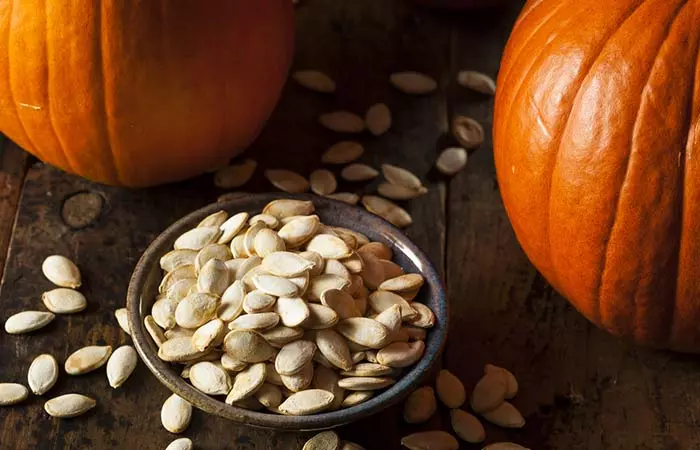
Serving size – 1 ounce
Magnesium – 73.4 mg
DV – 18 %
Pumpkin seeds are as good a source of magnesium as well as a rich source of proteins, polyunsaturated fatty acids, and numerous other antioxidant vitamins and carotenoids. All of these nutrients offer protection against inflammatory conditions like arthritis, hypertension, and diabetes (12).
Including pumpkin seeds in your diet
You can simply consume the whole seeds straight from the pumpkin – but after you separate them from the pulp and rinse the sticky residue.
7. Flaxseeds
Serving size – 1 ounce Magnesium – 10mg DV – 27 %
Besides magnesium, Flaxseeds are also rich in other nutrients, especially omega-3 fatty acids. These fatty acids help prevent heart disease, arthritis, and inflammatory bowel disease (13). Flaxseed oil was also found to lower cholesterol levels in certain animal studies.
Including flaxseeds in your diet
You can simply sprinkle a little amount of the seeds in your meals or yogurt. You can also add the seeds to your smoothie just blend and drink.
8. Sunflower Seeds
Serving size – 1 ounce Magnesium – 36.1mg DV – 9 %
The magnesium in sunflower seeds has a variety of benefits – it promotes heart health, prevents or treats asthma and arthritis, and can also help lower risk of certain types of cancer.
The seeds are a super healthy snack for kids as well (14). Along with magnesium, they contain other minerals like calcium, potassium, and iron – all of which are required for children’s growth and development.
Including sunflower seeds in your diet
You consume sunflower seed kernels hulled from their shells. And one brilliant way of including these hulled seeds in your diet is with toast. After you have spread butter on your toast, sprinkle some of these raw seeds on the top and enjoy a tasty crunch.
9. Sesame Seeds
Serving size – 1 ounceMagnesium – 99.7 mg DV – 25 %
If there is anything that can add some spice to your sex life, it is a handful of sesame seeds. They are rich in zinc that can help in the production of testosterone and sperm in men. And along with magnesium, they are a great source of iron and vitamin B6 too.
Sesame oil was also found to have a cholesterol-lowering effect (15).
Including sesame seeds in your diet
You can simply mix sesame seeds in your granola. Or even sprinkle them into a stir-fry.
10. Quinoa Seeds (cooked)
Serving size – 1 cupMagnesium – 118 mg DV – 301 %
Rich in protein, quinoa helps in developing muscle and aids in the production of body cells. It also contains heart-healthy fats that help raise the levels of good cholesterol (16).
Including quinoa seeds in your diet
You can include cooked quinoa seeds as an ingredient in a grain salad.
11. Cumin Seeds
Serving size – 6 grams (1 tablespoon, whole)Magnesium – 22 mg DV – 5 %
Cumin seeds aid digestion and help prevent gastrointestinal issues like irritable bowel syndrome. The seeds might also lower the levels of bad cholesterol (17).
Including cumin seeds in your diet
You can add roasted cumin seeds to fresh yogurt, stir fry dishes, or rice for extra flavor and nutrition.
Fruits And Vegetables Rich In Magnesium
12. Cherries

Serving size – 154 grams (1 cup without pits)
Magnesium – 16.9 mg
DV – 4 %
Cherries are a great source of magnesium. They have various benefits including their efficacy in helping people suffering from arthritis (18).
Including cherries in your diet
You can have a bowl of cherries as an evening snack. Or, add some cherries to your salad or in your yogurt.
13. Peach
Serving size – 175 grams grams (1 large peach)Magnesium – 15.7 mg DV – 4 %
Peaches are replete with compounds called anthocyanins that are beneficial for human health (19). Anthocyanins are flavonoid antioxidants that help reduce inflammation in the body, thereby cutting down the risk of chronic disease.
Including peaches in your diet
You can add sliced peaches to your oatmeal for breakfast or eat them whole as a convenient portable snack option.
14. Apricots
Serving size – 155 grams (1 cup of halves)Magnesium – 15.5 mg DV – 4 %
Apricots are believed to have properties that enhance fertility (20). Researchers believe this has to do with the fruit’s antioxidant properties that create an anti-inflammatory environment beneficial for spermatogenesis (21).
Including apricots in your diet
You can add a few chopped apricots to the batter the next time you are making whole grain pancakes. But ensure you don’t consume too many of the seeds as they have been found to contain minute amounts of cyanide (22).
15. Avocado
Serving size – 150 grams (1 cup of cubed avocado)Magnesium – 43.5 mg DV – 11 %
Not only does it taste good, but it also helps prevent cancer, cataract, stroke, and heart disease. Avocados are also rich in vitamins C and B6, which strengthen the immune and nervous systems, respectively (23). Furthermore, the potassium in the fruit prevents muscle cramps, while the plant sterols it contains helps to lower cholesterol.
Including avocado in your diet
You can add the fruit to your salad, slice up on some toast, or mash for a creamy and healthy substitute to mayonnaise for your sandwich. Or, you could just simply scoop the fruit out with a spoon and eat it plain.
16. Banana
Serving size – grams (1 medium 7”-7-⅞” long banana)Magnesium – 31.9 mg DV – 8 %
Banana could be one of the easiest options to elevate your magnesium levels. It is not just easily available, but also easy to eat and tasty as well.
Bananas also contain other compounds like phenolics, phytosterols, and carotenoids that offer excellent health benefits (24). These compounds are antioxidants that help reduce inflammation in the body and, in turn, lower risk of some chronic diseases like heart disease.
Including banana in your diet
The best way is to eat it raw. You can have a couple of bananas in the morning with breakfast or in between meals as a portable healthy snack. Also, you could add a banana to your smoothie for a creamy texture and extra nutrition.
17. Blackberries
Serving size – 144 grams (1 cup berries)Magnesium – 28.8 mg DV – 7 %
Besides being a good source of magnesium, blackberries are also rich in fiber, antioxidants, and phytonutrients – all of which benefit your health in various ways. The berries contain phenolic compounds that can prevent age-related neurodegenerative diseases (25).
Including blackberries in your diet
Blackberry smoothies can be a delicious and healthy treat. You can also toss a few of these berries on your pancakes or in your salad for extra sweet and tart flavor.
18. Spinach
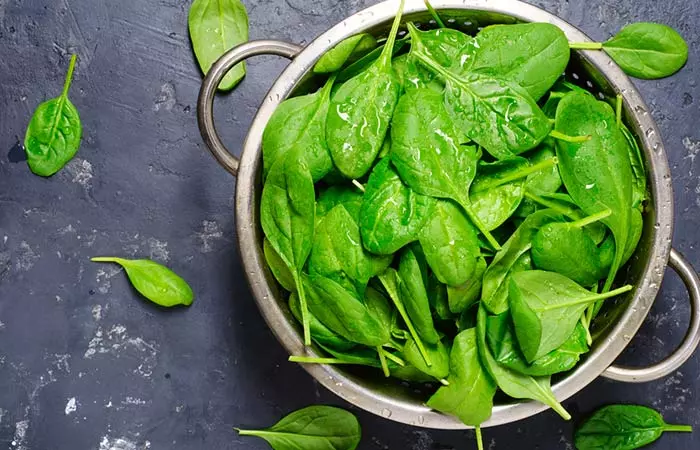
Serving size – 30 grams (1 cup raw)
Magnesium – 23.7 mg
DV – 6 %
I hope this reminds you of Popeye, because it did to me. Remember those ripped muscles and an instant rush of superhuman energy? Yes, that’s what I am talking about!
Apart from that, spinach also contains several power-packed water-soluble antioxidants that have great potential for human health (26).
Including spinach in your diet
If you are staying with your mother, no problem at all. There won’t be a day that would go by without her adding this wonder food somewhere in your food. But if not, you can add spinach leaves to your salads or soups.
19. Okra
Serving size – 80 grams (½cup slices, cooked)Magnesium – 28.8 mg DV – 7 %
This vegetable, apart from magnesium, comes with an assortment of nutrients that include iron, zinc, folate, vitamin C, and phosphorus. The oil from okra seeds contains unsaturated fatty acids. It also contains both essential and nonessential amino acids, thereby playing an important part in the human diet (27).
Including okra in your diet
Just steam them or sauté them with some spices, onions, and garlic in very little oil. You can also have them with rice or rotis.
20. Broccoli
Serving size – 91 grams (1 cup chopped, raw)Magnesium – 19.1 mg DV – 5 %
What makes broccoli what it is is not just magnesium – but also other nutrients like vitamins C and K, fiber, and calcium. It also is a great source of beta-carotene.
Broccoli is not just a good source of magnesium, but it also contains other nutrients like vitamins C and K, fiber, and calcium. It’s also a great source of beta-carotene, which is an antioxidant that reduces inflammation in the body. Not to mention that broccoli also contains lutein that can help maintain healthy vision (28).
Including broccoli in your diet
You can add broccoli to your favorite soup or just stir-fry it with a dash of black pepper. Broccoli also tastes great raw with some Greek yogurt dressing, or steamed with a bit of salt and pepper to be eaten as a delicious and nutritious side dish.
21. Beetroot
Serving size – 136 grams (1 cup, raw)Magnesium – 31.3 mg DV – 8 %
The bioactive compounds in beetroot were found to provide relief from chronic inflammation. It can help improve conditions like hypertension, type 2 diabetes, and dementiai Commonly occurring brain syndrome, referring to a group of symptoms, which leads to memory loss and inability to judge and reason. (29). The vegetable was also found to improve running performance in adults (30).
Including beetroot in your diet
You can chop raw beetroot and add it to your salad, or slice and roast in the oven for a tasty side dish.
22. Swiss Chard
Serving size – 36 grams (1 cup, raw)Magnesium – 29.2 mg DV – 7 %
Apart from magnesium, Swiss chard is also rich in vitamin K (31). It is beneficial in fighting cancer, lowering blood pressure levels, and preventing osteoporosis.
Including Swiss chard in your diet
You can add a handful of Swiss chard to your omelet or scrambled eggs. You can also add it to your salad or a sandwich using whole wheat bread along with kale.
23. Green Bell Peppers
Serving size – 149 grams (1 cup chopped, raw)Magnesium – 14.9 mg DV – 4 %
Peppers contain capsaicin that helps to boost metabolism (32). It is also a good source of fiber at 2.5 grams per cup and a great source of the antioxidant vitamin C at 200% daily value per cup.
Including green bell peppers in your diet
You can simply munch on raw green bell peppers with some low-fat dressing for a nutritious and tasty snack. Or, sauté in a pan with a little olive oil for a delicious vegetable side to your tacos, steak, or pasta dish. You can even add it to your brussels sprouts for complete nourishment and taste.
24. Artichokes
Serving size – 128 grams (1 medium artichoke)Magnesium – 76.8 mg DV – 19 %
As per a report published by the US National Library of Medicine, artichoke has properties that can help prevent cardiovascular disease (33).
Including artichokes in your diet
You can add artichokes with other veggies and seeds containing magnesium to ensure that you meet the RDA. The best way to do this is to add them to a fruit or vegetable salad, along with some magnesium-rich seeds and nuts.
Grains And Legumes Rich In Magnesium
25. Wild Rice
Serving size – 164 grams (1 cup cooked)Magnesium – 52.5mg DV – 13%
Besides being a great source of magnesium, wild rice is also a rich source of other nutrients like fiber and zinc. It also contains folate, which is used by the body to produce DNA and other genetic material (34).
Including wild rice in your diet
You can cook wild rice with herbs and use as a side dish to salmon for a healthy and flavorful meal.
26. Buckwheat
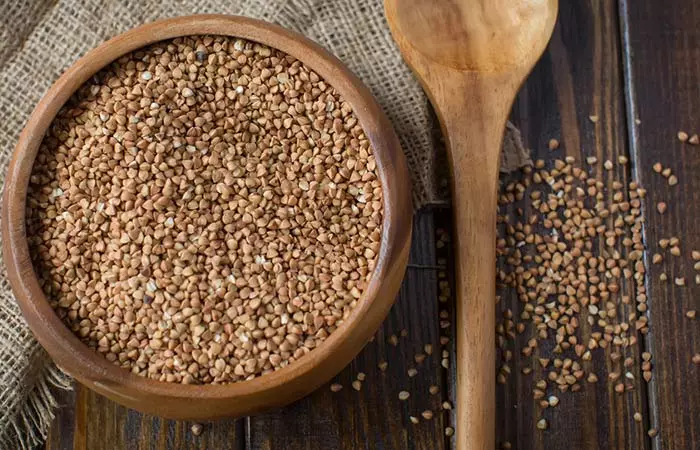
Serving size –170 grams (1 cup raw)
Magnesium – 393 mg
DV – 98 %
Besides being an excellent source of magnesium, buckwheat is free of gluten, which is great for those with celiac diseasei A digestive problem triggered by intake of gluten, caused by an immune reaction that damages the lining of the small intestine. or with gluten intolerance. Also, it doesn’t spike your blood sugar levels, unlike other whole grains. Buckwheat was also found to reduce blood cholesterol levels and offer protection against cancer and diabetes (35).
Including buckwheat in your diet
The best way to consume buckwheat is by cooking it in butter or making a porridge out of it for a sumptuous breakfast. You can add it to soups as well.
27. Wheat Germ
Serving size – 115 grams (1 cup raw)Magnesium – 275 mg DV – 69 %
Wheat germ , given its anti-inflammatory properties, can help treat painful menstruation (36).
Including wheat germ in your diet
Adding wheat germ to your salads, smoothies, or soups can help you meet your daily magnesium needs.
28. Oats
Serving size – 156 grams (1 cup, raw)Magnesium – 276 mg DV – 69 %
Oats are touted as a supremely healthy breakfast. They are also rich in fiber and antioxidants that help lower cholesterol and blood pressure levels.
Research shows that oats may have anti-cancer properties (37).
Including oats in your diet
Have oatmeal regularly for breakfast topped with some fiber and antioxidant-rich berries or other fruits.
29. Black-Eyed Peas
Serving size – 172 grams (1 cup cooked)Magnesium – 91.1 mg DV – 23 %
These are probably the most inexpensive option to boost your magnesium levels. And in addition to magnesium, black-eyed peas are also rich in fiber, protein, iron, and potassium. Also, raw black-eyed peas contain no saturated fats or trans fats, which makes them a healthy choice (38).
Including black-eyed peas in your diet
You can toss the peas in your salad along with some pepper, or eat alone with some salt and pepper for a nutritious side dish to ham or other protein options.
30. Kidney Beans
Serving size – 177 grams (1 cup cooked)Magnesium – 74.3 mg DV – 19 %
These beans are rich in folate, which is required for the production of red blood cells in the human body. The beans also aid in the treatment of diabetes, cancer, and heart disease (39).
Including kidney beans in your diet
Simply toss the beans in your salad, or use in soups to add fiber and nutrients. These beans also taste great mixed with rice or as a side dish with tacos. Alternatively, you can use black beans, edamame beans, and chickpeas without losing out on nutrition.
31. Yellow Corn
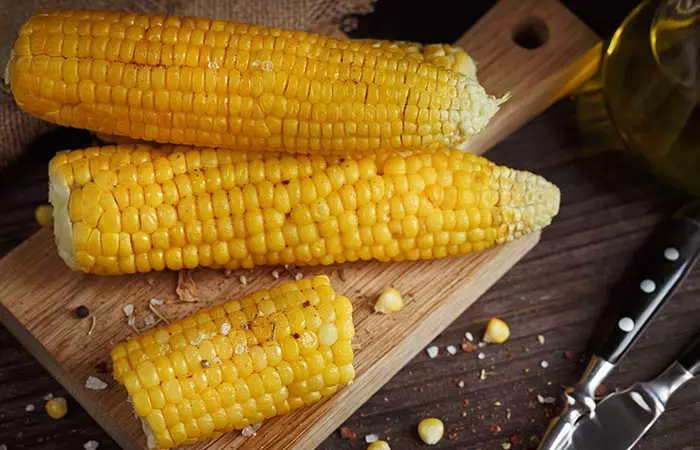
Serving size – 164 grams (1 cup kernels, cooked)
Magnesium – 42.6 mg
DV – 11 %
Apart from offering good amounts of magnesium, corn also is rich beta-carotene that helps reduce inflammation in the body and in turn lowers risk of some chronic diseases like heart disease and type 2 diabetes (40).
Including yellow corn in your diet
You can eat corn boiled or roasted. Or, add kernels to your salad for extra flavor and nutrients.
32. Soybeans
Serving size – 180 grams (1 cup cooked)Magnesium – 108 mg DV –27 %
Apart from magnesium, these nutritious legumes also contain other important vitamins, minerals, fiber, and amino acids. Soybeans are known to contain certain bioactive components like saponins and isoflavones (41). Isoflavones are beneficial for human health due to their antioxidant properties, while saponins can help improve cholesterol and blood fat levels (42).
Including soybeans in your diet
You can top your salad with soybeans.
33. Brown Rice
Serving size – 195grams (1 cup cooked) Magnesium – 85.5 mg DV – 68 %
Remember your mother telling you that brown rice is good? Well, she was right. Like always. This is because brown rice is not only richer in various nutrients and amino acids, but it also contains other bioactive compounds that benefit your health. Another study states that brown rice can help decrease the risk of cardiovascular disease in overweight or obese females (43).
Including brown rice in your diet
The simplest way to eat this nutritious grain is to replace white rice with brown rice in your cooking.
Other Foods Rich In Magnesium
Here are some other foods containing magnesium.
34. Wild Salmon
Serving size – 154 grams (½ fillet Atlantic salmon cooked)Magnesium – 57 mg DV – 14 %
Wild salmon is one of the best magnesium-rich foods. It also contains a rich variety of other nutrients that keep your body healthy such as omega-3 fatty acids that offer an array of health benefits (44). This type of salmon also has low levels of mercury and other contaminants.
Including wild salmon in your diet
Enjoy wild salmon steamed, pan-fried or grilled with some olive oil and herbs. You can eat it alone or on top of salmon, brown rice, or with steamed vegetables for a nutritious and delicious meal.
35. Halibut
Serving size – 159 grams (½ fillet cooked)Magnesium – 170 mg DV – 43 %
In addition to being a powerhouse of magnesium, halibut is also rich in selenium. Selenium contains certain beneficial compounds called selenoproteins that play an important role in reproduction and thyroid hormone metabolism (45).
Including halibut in your diet
Halibut can be fried, broiled, or even grilled. You can also pair it with wild rice and vegetables for a nutrient-dense meal.
36. Cocoa

Serving size – 86 grams (1 cup unsweetened cocoa powder)
Magnesium – 429 mg
DV – 107 %
I can see you smiling already! Chocolate might be considered unhealthy in some forms, given its sugar and calories. But if you consume it within limits, it can do wonders as it is a great source of magnesium.
Cocoa has been found to protect the nerves from inflammation and defend the skin against oxidative damage due to UV radiation (46). It could also be used for the prevention or treatment of certain types of allergies, cancers, inflammatory conditions, and anxiety (47).
Including chocolate in your diet
Consume cocoa in moderation combined with milk for a hot cocoa beverage, sprinkle a tablespoon of powder in your yogurt or hot cereal, or add to recipes for chocolatey flavor and its anti-inflammatory nutrients
37. Whole Milk
Serving size – 244 grams (1 cup)Magnesium – 24.4 mg DV – 6 %
We know that whole milk is a rich source of calcium. But what most of us may not know is that it is also replete with magnesium. In fact, magnesium makes it easier for your body to absorb calcium properly.
One study substantiates the link between milk consumption and reduced incidences of fractures (48). Adequate consumption of milk and related products also reduces the risk of low bone mass (49).
Including whole milk in your diet
You can have a glass of whole milk in the morning along with your breakfast. Or you can blend it along with fruit for a yummy milkshake.
38. Molasses
Serving size – 20 grams (1 tablespoon) Magnesium – 48.4 mg DV – 12 %
Sweeteners are indispensable at times. But most of them are white as they would have been stripped off their essential nutrients. This is why molasses is a healthier alternative to sweeteners. And according to research, it’s one natural way to improve testosterone levels as well (50).
Including molasses in your diet
You can add molasses as a sweetener to your desserts and baked dishes. Also, you can use it to replace artificial sweeteners in cakes and cookies.
39. Cloves
Serving size – 6 grams (1 tablespoon)Magnesium – 17.2 mg DV – 4 %
Cloves are rich in magnesium as well as antioxidants that are found to reduce issues with memory caused by oxidative stress (51).
Including cloves in your diet
The best way to consume cloves is in the raw form. You can chew 2 to 3 cloves a day. You can also add them to your rice dishes.
40. Prunes
Serving Size – 1 ounce
Magnesium – 19 mg
DV – 5%
In addition to magnesium, prunes are a powerhouse of fiber that aids digestion and promotes gut health (52). Their fiber also promotes a feeling of fullness and is an excellent snack choice for those wanting to manage their weight. Prunes also provide vitamin K and folate that support one’s overall well-being. They are naturally sweet and one can add them to both sweet and savory dishes.
Incorporating prunes in your diet
You can add prunes to your breakfast cereal, yogurt, or salads. You also may consume them as an evening snack along with a fistful of nuts.
41. Coconut Water
Serving size – 1 coconut yields (206 g)
Magnesium – 12.4 mg
DV – 2.95 %
In addition to magnesium, coconut water is also rich in electrolytes such as sodium and calcium, making it an excellent hydration source (53). It is also low in calories and sugar compared to many sports drinks, making it a healthier alternative. Further, research suggests coconut water may also help reduce blood sugar and diabetic retinal damage (54).
Incorporating coconut water in your diet
You may drink coconut water as it is or add it to your smoothies.
42. Almond Milk
Serving size – 100 g
Magnesium – 8.2 mg
DV – 1.95 %
Almond milk is not only rich in magnesium but also vitamin E, which is a powerful antioxidant (55). It helps protect the cells from free radical damage, reducing the risk of cardiovascular disease and cancer (56). Additionally, it is lactose-free, making it suitable for individuals with lactose intolerance (55).
Including almond milk in your diet
You may add almond milk to your smoothies, coffee, cereal, and oatmeal. You may also use it in cooking and baking.
Well, there is a list of some of the richest magnesium food sources. Additionally, tofu, figs, and sweet potatoes are also rich in magnesium. But what begs explanation is the seemingly mysterious link between magnesium and calcium. Of these two, which is more important?
Are You Getting Enough Magnesium?
Following are the normal values of magnesium in the blood. If your levels are within this range, you are good to go.
Magnesium Blood Level | |
| Adults | 1-8-2.6 milligrams per deciliter (mg/dL)[0.74-1.07 millimoles per liter (mmol/L)] |
| Child | 1.7-2.1 mg/dL (0.74-0.86 mmol/L) |
| New Born | 1.5-2.2 mg/dL (0.62-0.91 mmol/L) |
If your levels are too low, then you should have your blood tested as soon as possible. There are certain signs of magnesium deficiency. These include (1):
- Muscle cramps and spasms
- Numbness
- Tingling sensation
- Fatigue and weakness
- Seizures
- Nausea and vomiting
- Loss of appetite
- Abnormal heart rhythms
- Coronary spasms
- Trouble sleeping
- Depression
- Anxiety
- Issues with memory
- Headaches and migraines
- Inflammation
- ADHD
- Issues with thyroid
Jen, a blogger, shared her unpleasant experience of magnesium deficiency in her blog post. She explained, “ I have night terrors! I had pre-eclampsia. I sweat a lot when I run. I was increasingly riddled with anxiety. Everything felt like a monumental effort (i)!”
You can avoid all of these by increasing your magnesium intake.
How To Increase Your Magnesium Intake
To increase your magnesium intake, simply include whatever magnesium rich foods we have spoken about in your daily meals and snacks, and your magnesium requirements should be ok. On top of that, keep the following points in mind:
– You can also take a high-quality magnesium supplement every day. But be sure to consult your doctor or nutritionist before doing this.
– Also, there is a list of things you must avoid to prevent magnesium wastage (57). These include:
- Gluten
- Alcohol
- Refined sugar (or any refined products, for that matter)
- Prolonged stress
– Ensure you also get enough of these nutrients – vitamins B1, B6, D3, and E and selenium. These nutrients help to absorb and retain magnesium in your body.
Recommended Daily Intake Of Magnesium
The values shown below include the magnesium you should be receiving from the foods you consume and the supplements you take (if any).
| Category | Recommended Dietary Allowance (RDA) |
Children | |
| 1-3 years | 80 mg/day |
| 4-8 years | 130 mg/day |
| 9-13 years | 240 mg/day |
Females | |
| 14-18 years | 360 mg/day |
| 19-30 years | 310 mg/day |
| 31 years and over | 320 mg/day |
| Pregnant | Under 19 years: 400 mg/day 19-30 years: 310 mg/day 31 years and up: 320 mg/day |
| Breastfeeding | Under 19 years: 360 mg/day 19-30 years: 310 mg/day 31 years and up: 320 mg/day |
Males | |
| 14-18 years | 410 mg/day |
| 19-30 years | 400 mg/day |
| 31 years and over | 420 mg/day |
What Can Magnesium Deficiency Lead To?
A magnesium test helps determine the levels. The test is usually done for one or more of the following reasons:
- To diagnose nerve or muscle problems
- To diagnose other symptoms like nausea, low blood pressure, dizziness, slurred speech, and diarrhea
- To monitor kidney function
- To find the cause of trouble with breathing
- To find the cause of low levels of calcium or potassium that don’t seem to improve with treatment
If you go for a magnesium test, ensure you tell your doctor about all the medications you take. All of them. This is because certain medications might change the results of the test, leading to further complications.
And don’t take medications containing magnesium at least three days before your test. Some of these include Epsom salts, magnesium supplements, milk of magnesia, and certain other diuretics.
The test feels just like any other blood test – so you have nothing to worry about.
Magnesium deficiency can also be termed as the ‘invisible deficiency’. This is because the initial symptoms are so subtle that it could be taken for something else. Magnesium deficiency can trigger 22 different medical conditions.
A study was conducted on 300 patients to measure the magnesium levels in Covid-19 patients. The study found that 48% of the patients had magnesium deficiency, which is defined as having magnesium levels less than 0.75 mmol/L. Out of this 48%, 13% had hypomagnesemia, which is less than 0.65 mmol/L.
What Is The Link Between Magnesium And Calcium?
When it comes to building stronger bones, magnesium may be a bit more important.
But how?
Let’s get into the science. Magnesium plays the role of an essential compound (scientifically called the enzymatic cofactor) that helps incorporate calcium and other essential minerals into the bones.
Calcium doesn’t do this. Magnesium does.
Studies say that healthy bones require not just calcium, but vitamin D and magnesium as well. And without magnesium, vitamin D nor calcium would be properly absorbed in the body. Magnesium converts vitamin D and calcium into usable forms.
More importantly, the deficiency of magnesium, just like the deficiency of most nutrients, affects all the sections of the body.
Infographic: Easy Magnesium-Rich Food Recipes
Magnesium is an essential nutrient that may help prevent migraines and possibly aid in reversing prediabetesi Condition prior to type-2 diabetes with high sugar levels, which, without lifestyle changes and medication, may progress to diabetes. . Consuming foods like spinach, bananas, pumpkin seeds, and apricots can reduce your risk of magnesium deficiency. In the infographic, we have provided two magnesium-rich food recipes to help you reach your required daily allowance. Check out the infographic below to know more!
Some thing wrong with infographic shortcode. please verify shortcode syntax
Magnesium deficiency is usually rare. However, a low intake of magnesium for a long time can result in a deficiency and increase the risk of type-2 diabetes and hypertension. Hence, you must include magnesium-rich foods, such as Brazil nuts, almonds, pecans, cherries, peach, apricots, banana, spinach, beetroot, broccoli, buckwheat, and wheat germ, in your diet. The best thing about this mineral is that it helps prevent migraines, premenstrual syndrome, and gastrointestinal issues. If you are having trouble sleeping and experiencing symptoms like depression, anxiety, migraines, and thyroid issues, you may be suffering from a magnesium deficiency. So, seek medical help immediately.
Frequently Asked Questions
Does vitamin D deplete magnesium?
Although moderate amounts of vitamin D don’t affect magnesium levels, taking it in higher doses may deplete magnesium levels.
Is it OK to take magnesium every day?
Yes, it is safe to take magnesium every day. Taking 350 mg of magnesium per day is generally recommended for most adults.
How long does it take to raise magnesium levels?
Oral supplementation of magnesium may take approximately 40 weeks to raise magnesium levels in the body.
What is the best time to take magnesium?
Magnesium supplements can be taken at any time of the day. However, few may find it better to take them in the morning after breakfast.
Can magnesium make you tired the next day?
Yes, magnesium may make you feel tired if taken in excess. Hence, take magnesium supplements only as advised and in recommended doses.
Illustration: Foods High In Magnesium To Include In Your Diet
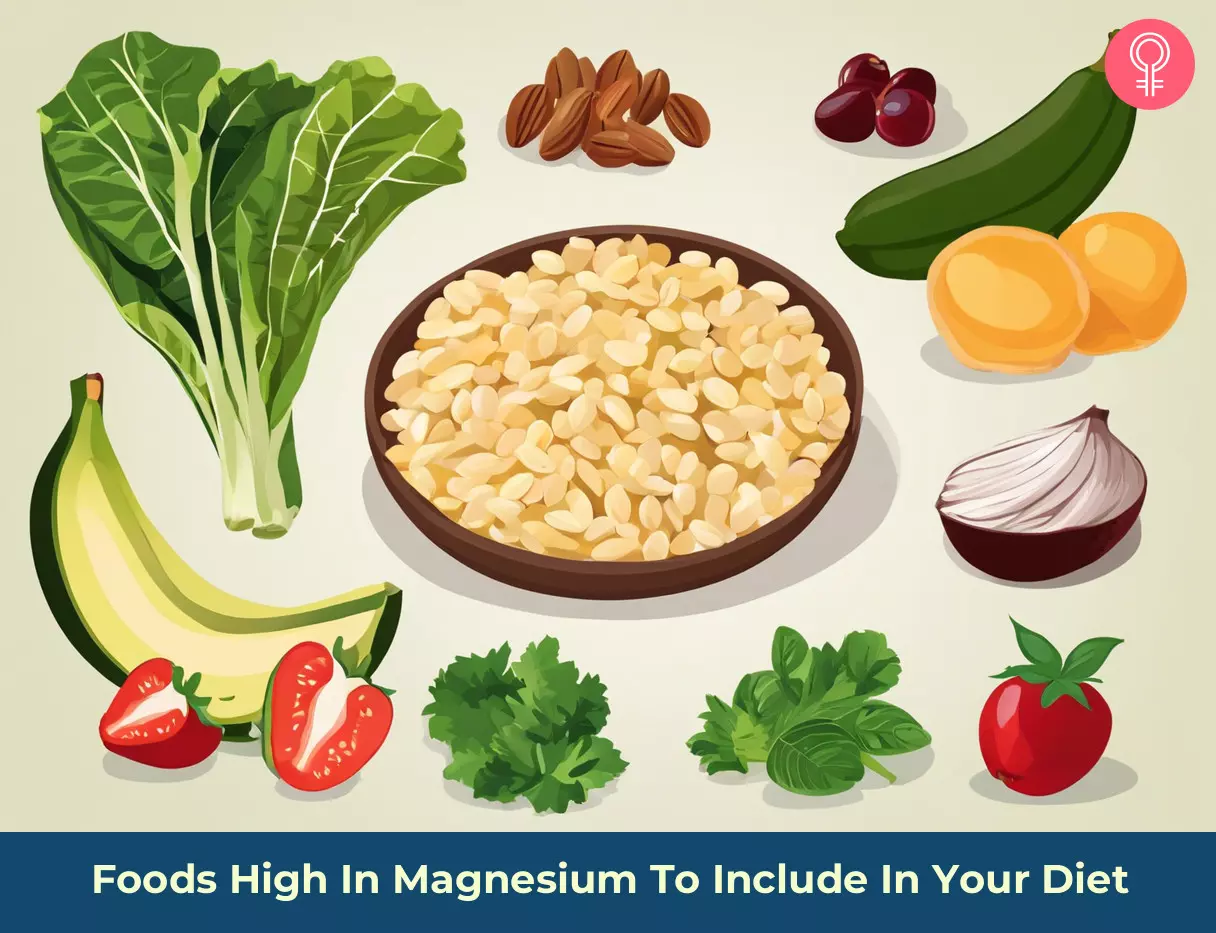
Image: Stable Diffusion/StyleCraze Design Team
Discover 24 high-magnesium foods that make delicious 700-calorie meals! Also, learn how to make healthy, tasty meals packed with magnesium.Take a look at the video below.
Personal Experience: Source
StyleCraze's articles are interwoven with authentic personal narratives that provide depth and resonance to our content. Below are the sources of the personal accounts referenced in this article.
i. How Magnesium Changed (and Possibly Saved) My Lifehttps://holidaisyblog.wordpress.com/2014/05/06/how-magnesium-changed-and-possibly-saved-my-life/
References
Articles on StyleCraze are backed by verified information from peer-reviewed and academic research papers, reputed organizations, research institutions, and medical associations to ensure accuracy and relevance. Read our editorial policy to learn more.
- Magnesium Fact Sheet for Health Professionals
https://ods.od.nih.gov/factsheets/Magnesium-HealthProfessional/ - Magnesium
https://lpi.oregonstate.edu/mic/minerals/magnesium - Magnesium and type 2 diabetes
https://www.ncbi.nlm.nih.gov/pmc/articles/PMC4549665/ - The Role of Magnesium in Neurological Disorders
https://www.ncbi.nlm.nih.gov/pmc/articles/PMC6024559/ - A Single Consumption of High Amounts of the Brazil Nuts Improves Lipid Profile of Healthy Volunteers
https://www.ncbi.nlm.nih.gov/pmc/articles/PMC3693158/ - Health benefits of almonds beyond cholesterol reduction
https://pubmed.ncbi.nlm.nih.gov/22296169/ - The uses and properties of almond oil
https://pubmed.ncbi.nlm.nih.gov/20129403/ - Nuts, pecans
https://fdc.nal.usda.gov/fdc-app.html#/food-details/170182/nutrients - Health benefits of nuts: potential role of antioxidants
https://pubmed.ncbi.nlm.nih.gov/17125534/ - Nutritional composition of raw fresh cashew (Anacardium occidentale L.) kernels from different origin
https://www.ncbi.nlm.nih.gov/pmc/articles/PMC4779481/ - Role of walnuts in maintaining brain health with age
https://pubmed.ncbi.nlm.nih.gov/24500933/ - The Effect of Pumpkin (Cucurbita Pepo L) Seeds and L-Arginine Supplementation on Serum Lipid Concentrations in Atherogenic Rats
https://www.ncbi.nlm.nih.gov/pmc/articles/PMC3746528/ - Flaxseed—a potential functional food source
https://www.ncbi.nlm.nih.gov/pmc/articles/PMC4375225/ - Nutritional Characteristics Assessment of Sunflower Seeds Oil and Cake. Perspective of Using Sunflower Oilcakes as a Functional Ingredient
https://www.ncbi.nlm.nih.gov/pmc/articles/PMC8619027/ - Nutritional value of sesame seeds
https://pubmed.ncbi.nlm.nih.gov/21842753/ - Healthy food trends – quinoa
https://medlineplus.gov/ency/patientinstructions/000731.htm - Effects of cumin extract on oxLDL paraoxanase 1 activity FBS total cholesterol triglycerides HDL-C LDL-C Apo A1 and Apo B in in the patients with hypercholesterolemia
https://www.ncbi.nlm.nih.gov/pmc/articles/PMC4039583/ - Fresh Cherries May Help Arthritis Sufferers
https://agresearchmag.ars.usda.gov/2004/may/cherry - Regulation of anthocyanin biosynthesis in peach fruits
https://pubmed.ncbi.nlm.nih.gov/24827911/ - Lycopene and male infertility
https://www.ncbi.nlm.nih.gov/pmc/articles/PMC4023371/ - Vitamins and antioxidants in the management of male fertility
https://www.ncbi.nlm.nih.gov/pmc/articles/PMC5508432/ - Cyanide poisoning caused by ingestion of apricot seeds
https://pubmed.ncbi.nlm.nih.gov/20196932/ - Avocado, raw
https://fdc.nal.usda.gov/fdc-app.html#/food-details/1102652/nutrients - Bioactive compounds in banana and their associated health benefits – A review
https://pubmed.ncbi.nlm.nih.gov/27041291/ - The blackberry fruit: a review on its composition and chemistry
metabolism and bioavailability - Antioxidant Effects of Spinach (Spinacia oleracea L.) Supplementation in Hyperlipidemic Rats
https://www.ncbi.nlm.nih.gov/pmc/articles/PMC3999804/ - Evaluation of Fatty Acid and Amino Acid Compositions in Okra (Abelmoschus esculentus) Grown in Different Geographical Locations
https://www.ncbi.nlm.nih.gov/pmc/articles/PMC3793589/ - Dietary Sources of Lutein and Zeaxanthin Carotenoids and Their Role in Eye Health
https://www.ncbi.nlm.nih.gov/pmc/articles/PMC3705341/ - The Potential Benefits of Red Beetroot Supplementation in Health and Disease
https://www.ncbi.nlm.nih.gov/pmc/articles/PMC4425174/ - Whole beetroot consumption acutely improves running performance
https://pubmed.ncbi.nlm.nih.gov/22709704/ - Vitamin K2 Needs an RDI Separate from Vitamin K1
https://www.ncbi.nlm.nih.gov/pmc/articles/PMC7353270/ - Capsaicin may have important potential for promoting vascular and metabolic health
https://www.ncbi.nlm.nih.gov/pmc/articles/PMC4477151/ - Bioactive Compounds from Artichoke and Application Potential
https://www.ncbi.nlm.nih.gov/pmc/articles/PMC10666951/ - Folate
https://ods.od.nih.gov/factsheets/Folate-Consumer/ - Buckwheat as a Functional Food and Its Effects on Health
https://pubmed.ncbi.nlm.nih.gov/26270637/ - Effects of Wheat Germ Extract on the Severity and Systemic Symptoms of Primary Dysmenorrhea: A Randomized Controlled Clinical Trial
https://www.ncbi.nlm.nih.gov/pmc/articles/PMC4222016/ - Nutritional advantages of oats and opportunities for its processing as value added foods – a review
https://www.ncbi.nlm.nih.gov/pmc/articles/PMC4325078/ - Black eyed peas, black eyed
https://fdc.nal.usda.gov/fdc-app.html#/food-details/2550757/nutrients - All about beans
https://www.library.nd.gov/statedocs/NDSUExtensionService/fn164320131223.pdf - Yellow maize with high β-carotene is an effective source of vitamin A in healthy Zimbabwean men1,2,3,4
https://www.ncbi.nlm.nih.gov/pmc/articles/PMC3142725/ - The Science of Soy: What Do We Really Know?
https://www.ncbi.nlm.nih.gov/pmc/articles/PMC1480510/ - Saponins from edible legumes: chemistry, processing, and health benefits
https://pubmed.ncbi.nlm.nih.gov/15117556/ - Effect of Brown Rice Consumption on Inflammatory Marker and Cardiovascular Risk Factors among Overweight and Obese Non-menopausal Female Adults
https://www.ncbi.nlm.nih.gov/pmc/articles/PMC4018597/ - Farmed Salmon vs. Wild Salmon
https://doh.wa.gov/community-and-environment/food/fish/farmed-salmon - Selenium
https://ods.od.nih.gov/factsheets/Selenium-HealthProfessional/ - Cocoa and Chocolate in Human Health and Disease
https://www.ncbi.nlm.nih.gov/pmc/articles/PMC4696435/ - Health benefits of cocoa
https://pubmed.ncbi.nlm.nih.gov/24100674/ - Effects of Dairy Products Consumption on Health: Benefits and Beliefs—A Commentary from the Belgian Bone Club and the European Society for Clinical and Economic Aspects of Osteoporosis, Osteoarthritis and Musculoskeletal Diseases
https://www.ncbi.nlm.nih.gov/pmc/articles/PMC4703621/ - Milk and Dairy Products: Good or Bad for Human Bone? Practical Dietary Recommendations for the Prevention and Management of Osteoporosis
https://www.ncbi.nlm.nih.gov/pmc/articles/PMC8072827/ - The effect of sugar cane molasses on the immune and male reproductive systems using in vitro and in vivo methods
https://www.ncbi.nlm.nih.gov/pmc/articles/PMC5110661/ - Clove (Syzygium aromaticum): a precious spice
https://www.ncbi.nlm.nih.gov/pmc/articles/PMC3819475/ - Chemical composition and potential health effects of prunes: a functional food?
https://pubmed.ncbi.nlm.nih.gov/11401245/ - Coconut Water: A Sports Drink Alternative?
https://www.ncbi.nlm.nih.gov/pmc/articles/PMC10534364/ - Effects of coconut water on blood sugar and retina of rats with diabetes
https://www.ncbi.nlm.nih.gov/pmc/articles/PMC7849505/ - How well do plant based alternatives fare nutritionally compared to cow’s milk?
https://www.ncbi.nlm.nih.gov/pmc/articles/PMC5756203/ - Vitamin E
https://ods.od.nih.gov/factsheets/VitaminE-HealthProfessional/ - Nutritional Aspects of Magnesium Metabolism
https://www.ncbi.nlm.nih.gov/pmc/articles/PMC1272307/pdf/westjmed00230-0028.pdf
Read full bio of Staci Gulbin
Read full bio of Ravi Teja Tadimalla
Read full bio of Arshiya Syeda
Read full bio of Aparna Mallampalli






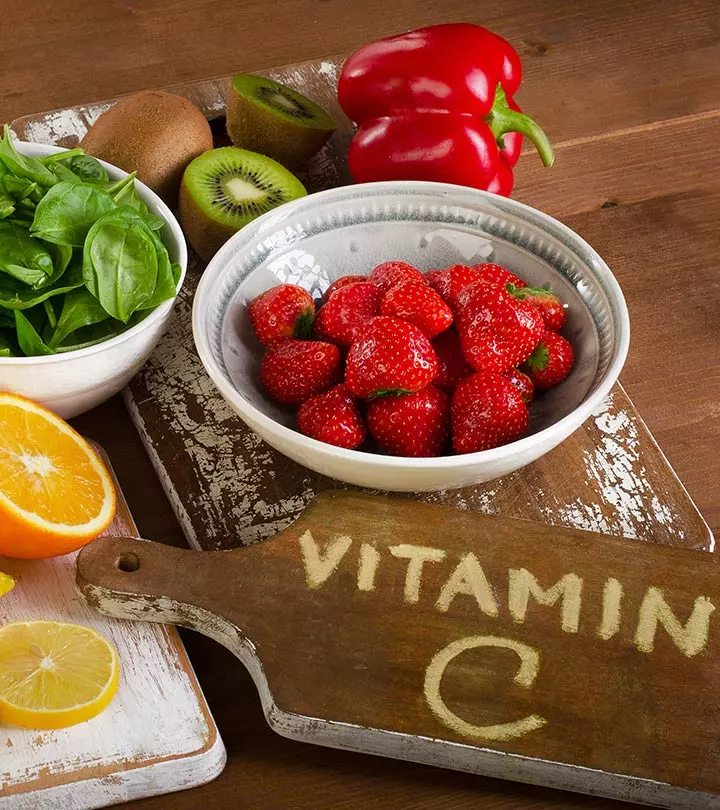
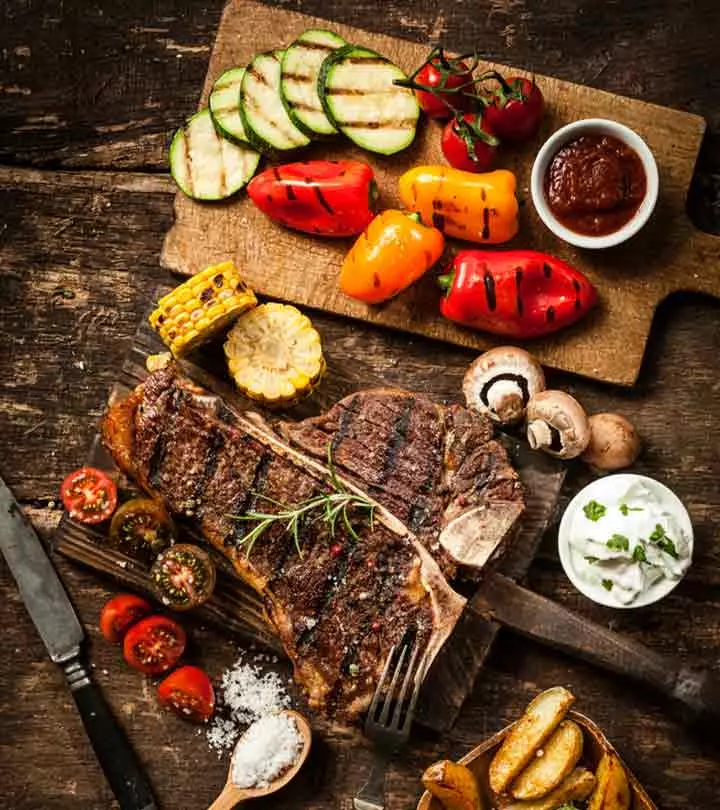
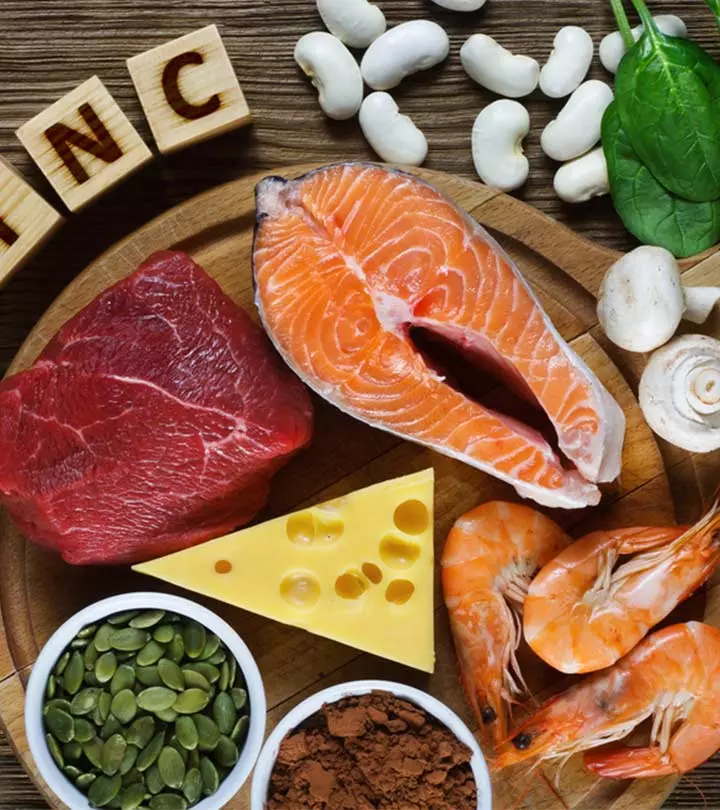
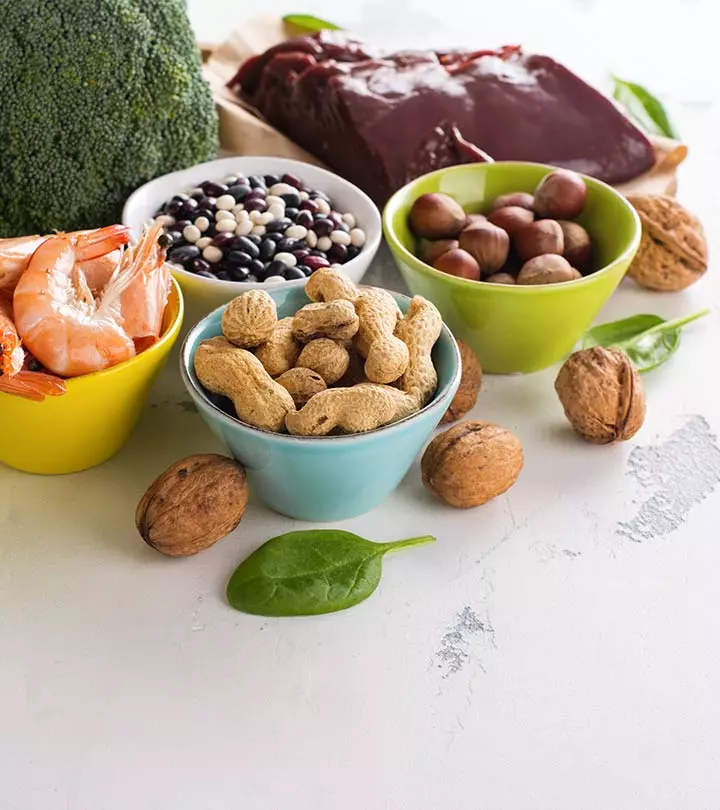
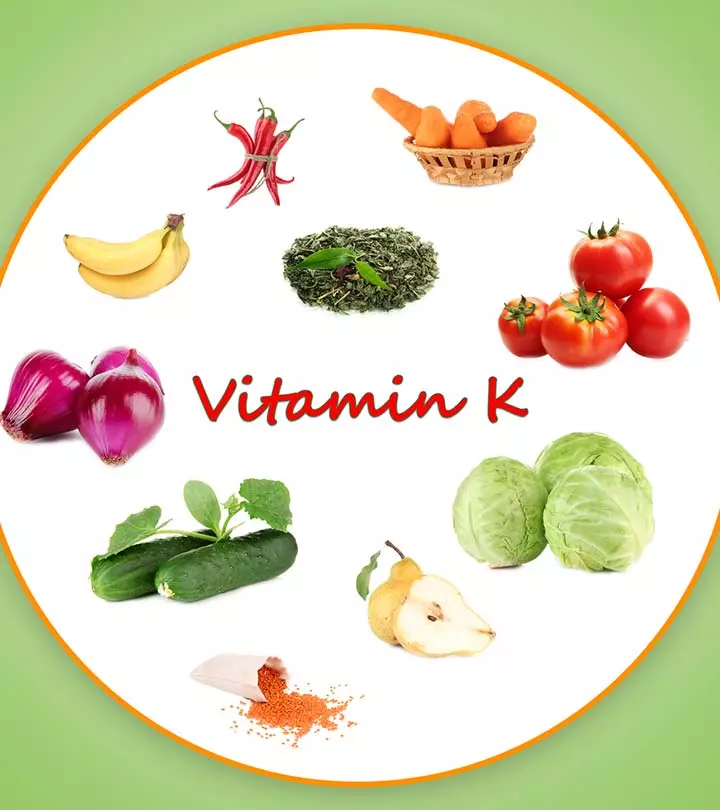
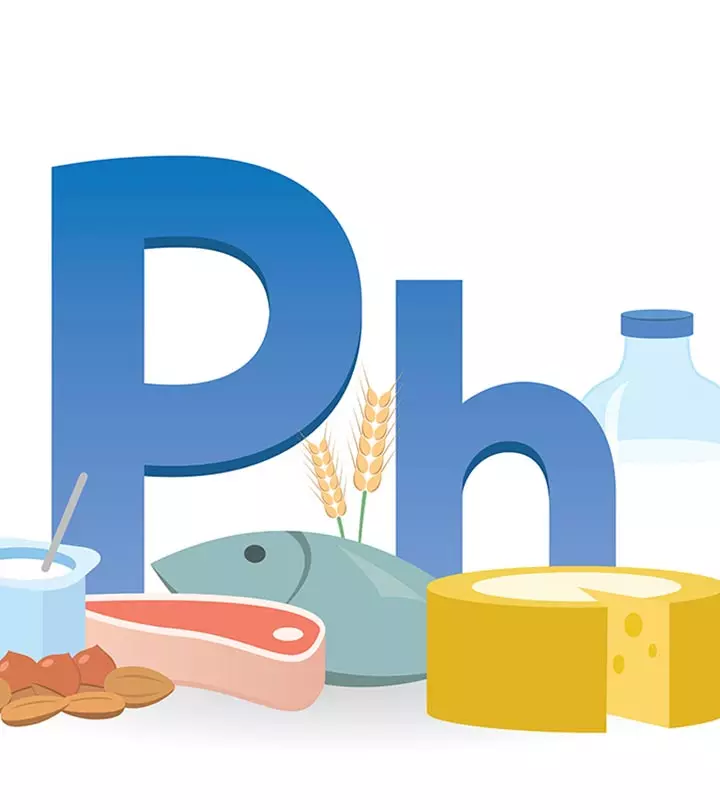

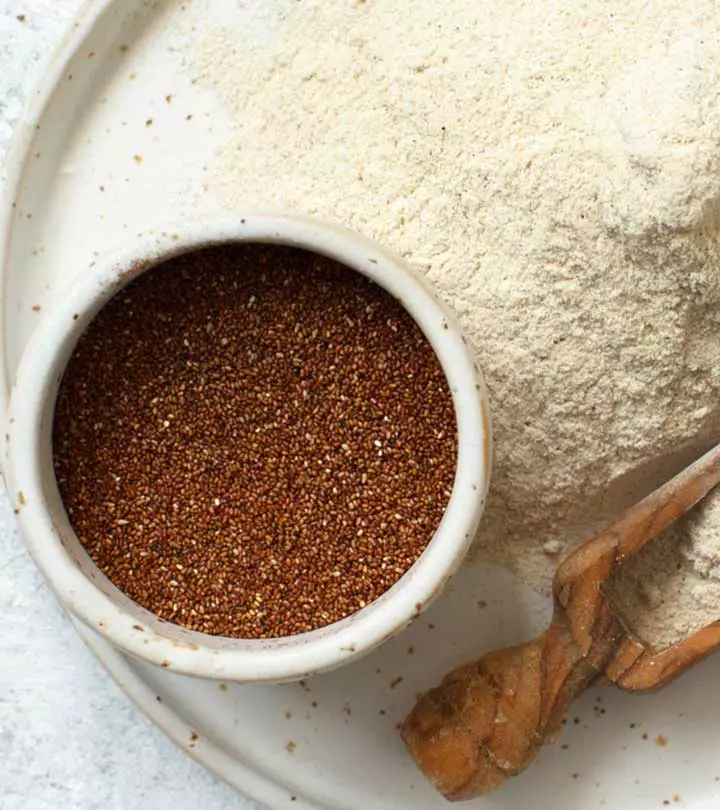
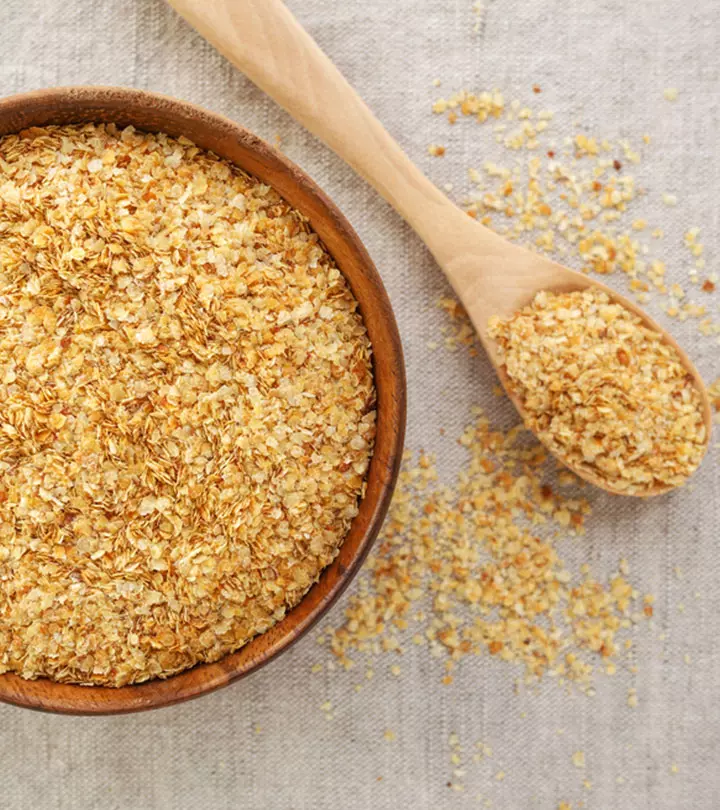
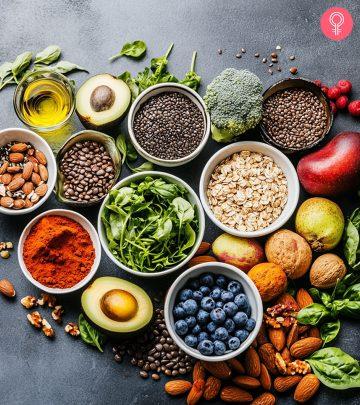
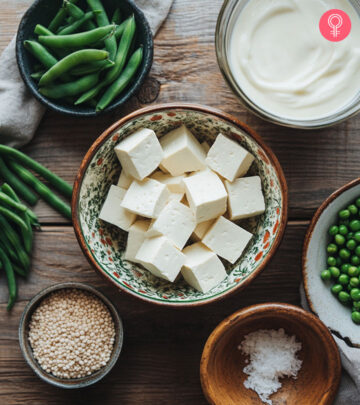





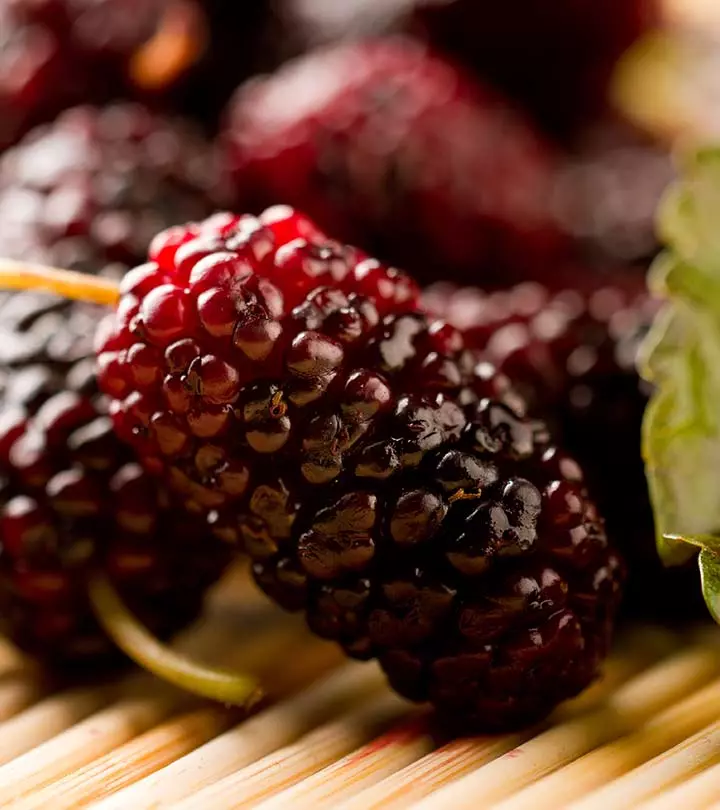
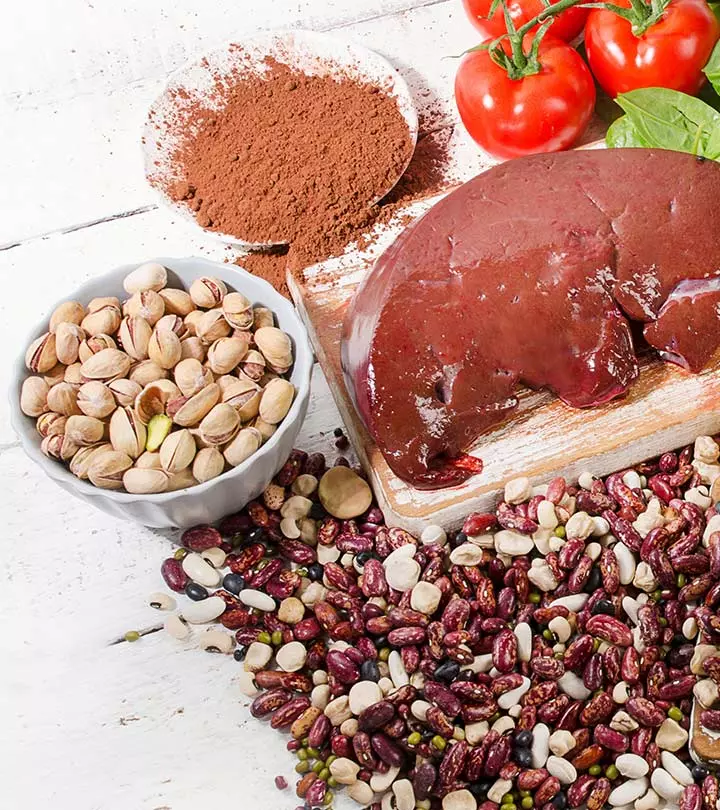
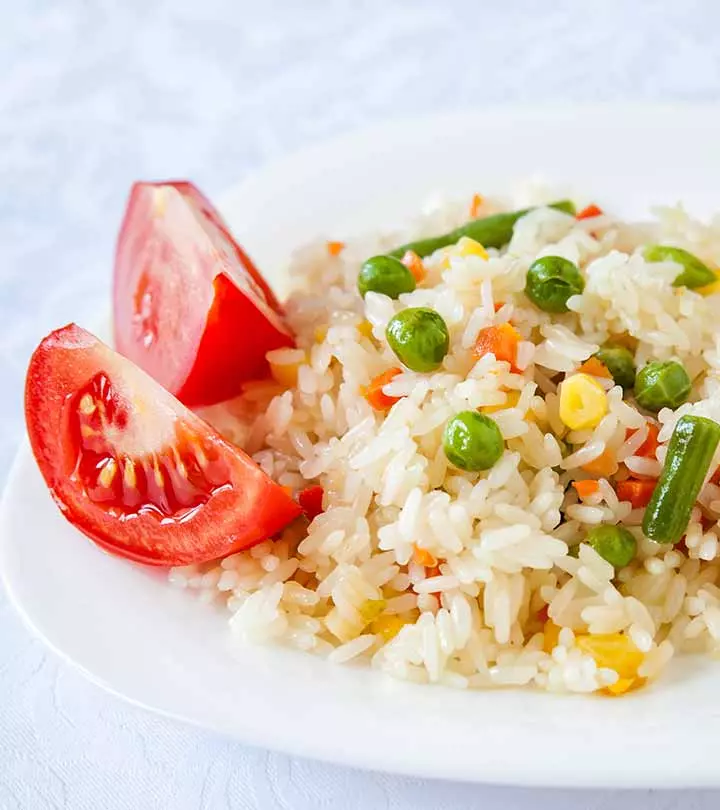
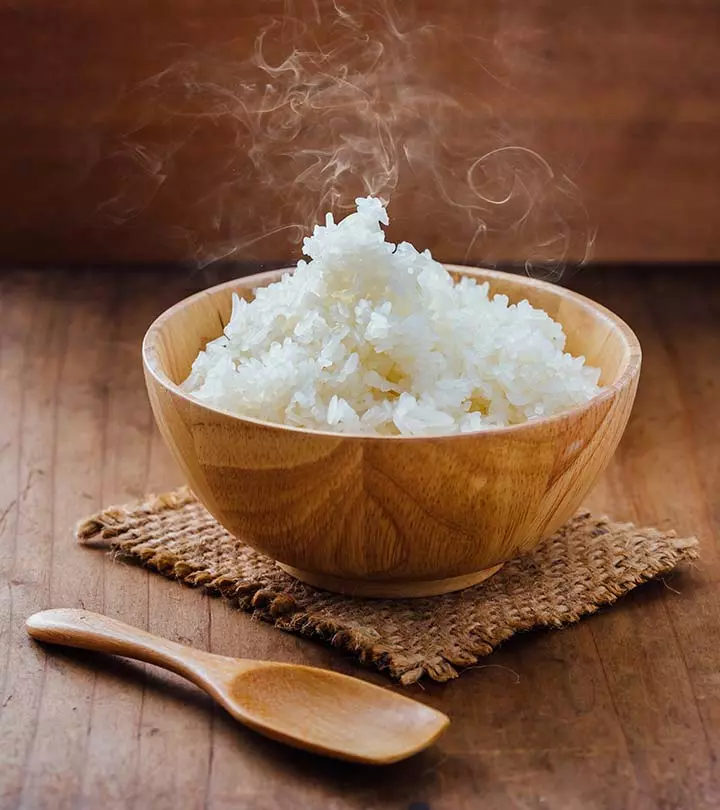
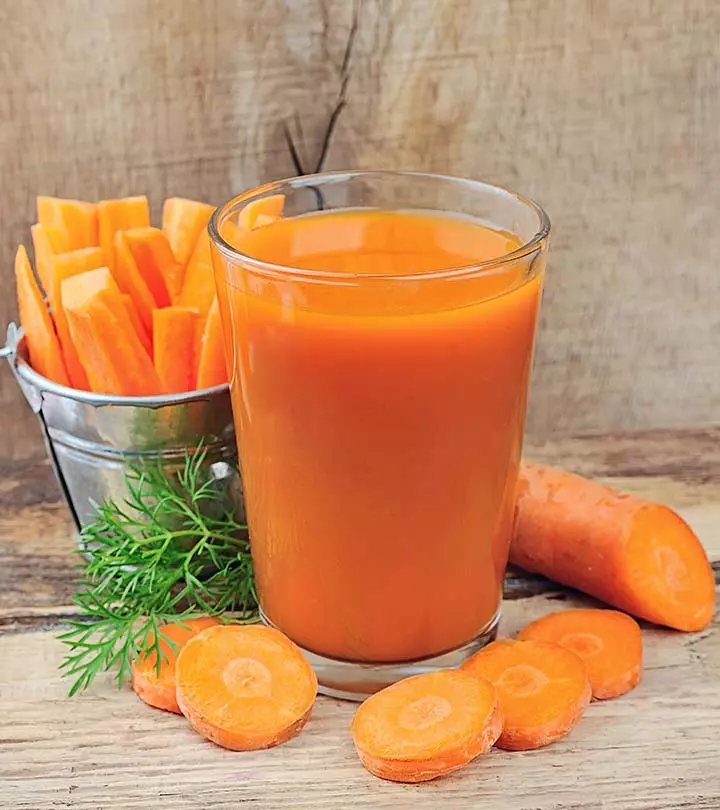
Community Experiences
Join the conversation and become a part of our empowering community! Share your stories, experiences, and insights to connect with other beauty, lifestyle, and health enthusiasts.